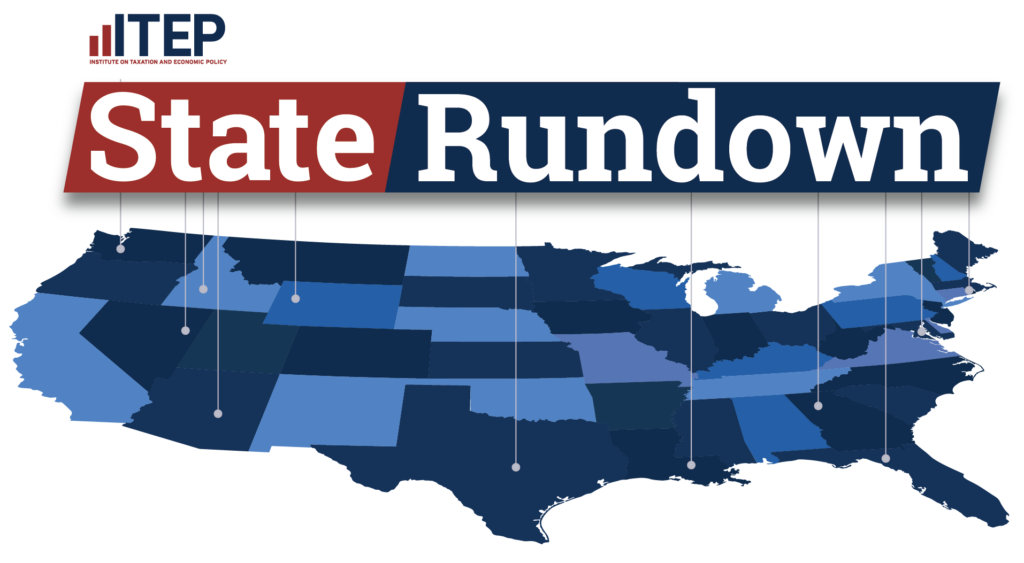Read this Policy Brief in PDF here.
General sales taxes are an important revenue source for state governments, accounting for close to one-third of state tax collections nationwide. But most state sales taxes have a damaging structural flaw: they typically apply to most sales of goods, such as books and computers, but exempt most services such as haircuts and car repairs. This omission is largely a historical accident. When most state sales taxes were enacted in the 1930s, tax administrators had fewer resources to identify and monitor sales of services, and services comprised a relatively small part of consumer spending. Thus, in the interest of expedience, sales taxes often were structured to apply only to sales of “tangible personal property.” Over the last several decades, however, states have become more adept at enforcing sales tax collection laws and spending on services has increased significantly. In 2015, for example, services represented 67 percent of household spending. But few states have successfully adapted this shift in consumption. Only Hawaii, New Mexico, and South Dakota tax services comprehensively, and a survey by the Federation of Tax Administrators suggests that most states tax less than half of the services that are potentially taxable. This policy brief surveys the many benefits of adding services to sales tax bases and assesses potential pitfalls in attempts to tax services.
Additional Revenue and More Sustainable Growth
Broadening sales tax bases to include services allows states to collect additional tax revenue without having to increase tax rates. But base broadening will also pay long-term dividends. As consumers spend more of their income on services, states taxing these services will see a more sustainable level of growth in sales tax revenues. Moreover, broadening the tax base can potentially make sales tax revenues more stable in the long run since declines in one area of consumption will be offset by gains in another area. In other words, adding services to the tax base helps achieve adequate revenues in both the short run and the long run.
Making Sales Taxes More Equitable
Sales taxes can create two types of unfairness in the tax code. First, sales taxes generally include a wide variety of special exemptions, which often discriminate between similar taxpayers in ways that are not defensible from a tax fairness standpoint. Second, sales taxes are regressive, requiring low-income taxpayers to pay more of their income in sales tax than wealthier taxpayers.
Exemptions for services are a prime example of this first type of unfairness because exempting services discriminates against individuals who consume more goods than services. For example, it makes little sense to charge tax on purchases of movies while exempting rentals or theater tickets to view those same films. Applying sales taxes broadly so that they include purchases of services can improve what is known as “horizontal equity”: taxpayers in similar circumstances will be taxed similarly regardless of what they prefer to purchase.
The second type of unfairness mentioned above relates to “vertical equity,” or the treatment of taxpayers at different income levels. In some limited circumstances, applying sales taxes to purchases of services can result in a slightly less regressive sales tax because some services—such as country club memberships—are consumed disproportionately by wealthier taxpayers.
However, the improvements to “vertical equity” from sales tax base broadening are likely to be limited in practice. First, low-income taxpayers spend a higher share of their income on both goods and services than do wealthier taxpayers, who are more likely to put away some income towards savings and investments. No expansion of the tax base can change this basic relationship between consumption and income.
Second, the impact of base broadening on tax fairness can vary depending on which services are taxed. Taxing services such as housing and utilities can actually make the sales tax more regressive because these services are basic staples of consumer spending, not high-end luxuries.
In most cases, expanding sales tax bases to cover a broader swath of personal services is unlikely to change the overall distribution of the sales tax in a meaningful way. But that does not diminish the potential of such expansions to improve the horizontal equity, adequacy, and sustainability of state tax codes.
Which Services Should Be Taxed?
The basic rule of thumb for which services should be taxed is very similar to the way states seek to tax goods: services consumed by individuals should be taxed, while services consumed by businesses in the process of producing goods and services of their own should typically be exempt.
Economists largely agree that items purchased by wholesalers for resale, and items purchased by businesses for use in producing other products, should generally not be taxed. Taxing these purchases can potentially make sales taxes more unfair because “business to business” sales taxes are ultimately passed through to consumers in the form of higher prices. These passed-through taxes are invisible to the consumer and have unpredictable effects on tax fairness since the amount passed through depends on the number of stages of production that were taxed.
For this reason, sales tax base expansion efforts should focus on services that are consumed primarily by individuals rather than businesses. In practice, however, it may not always be possible to fully implement this ideal. Taxing telephone services purchased for personal use while exempting those purchased for business use, for example, may prove too difficult for states to enforce. Small business owners and self-employed individuals would have a clear means and incentive to evade the tax on the portion of telephone services representing their own personal use. In this case, the realities of tax enforcement may lead states to tax these services for all purchasers even though many business purchases would be taxed under such a system.
Advertising services, however, are arguably in a different category. Since the vast majority of advertising services are purchased by businesses, states seeking to avoid taxing business inputs may consider exempting these services entirely, rather than trying to collect a relatively small amount of revenue from the few individual taxpayers that purchase advertising services.
Rate Cuts, Offsets, and Tax Shifts
Clearly, expanding the sales tax base will increase tax revenues if no other changes are made. But if raising new revenue is not an immediate goal, combining a sales tax base expansion with a sales tax rate reduction can be an appropriate reform that advances both the “horizontal equity,” and sustainability, of the sales tax. A tax change of this kind that is initially “revenue neutral”—expanding the tax base and reducing the sales tax rate to leave total sales tax collections unchanged—may eventually result in higher tax revenues over the long run, since consumption of services has generally been growing faster than consumption of goods.
An alternative reform involves pairing a regressive sales tax base expansion with a progressive boost in targeted tax credits. Twenty-six states and the District of Columbia now allow Earned Income Tax Credits (EITC), for example, that are designed to incentivize work and offset some of the taxes paid by low-income working families. Similarly, a few states allow sales tax credits designed specifically to offset part of the sales tax liability faced by low-income taxpayers. Enacting or expanding either of these types of credits can provide targeted tax benefits to those families most affected by an expansion of the sales tax base.
Unfortunately, in recent years, lawmakers in states such as North Carolina have pursued a different type of tax tradeoff: expanding the sales tax base to include more services while using the additional revenue to fund income tax cuts. This type of “tax shift” typically results in higher taxes on low- and moderate-income families and lower taxes for those families with substantial incomes. In addition to the fairness problems with such an approach, these shifts are also likely to slow state revenue growth in the long-term since income taxes have traditionally provided a more sustainable stream of revenue than sales taxes.
Conclusion
Expanding sales tax bases to include more services is good policy. Doing so can make sales taxes less discriminatory and more responsive to economic growth. This reform should be particularly appealing to states in need of additional revenue since sales tax base expansion can generate revenue without requiring increases in tax rates.
Regardless of whether services are included in the tax base, however, sales taxes will remain regressive. Given this reality, there is a strong case to be made that efforts to expand sales tax bases to include more services should be paired with tax cuts for low-income families such as an Earned Income Tax Credit or sales tax credit.





